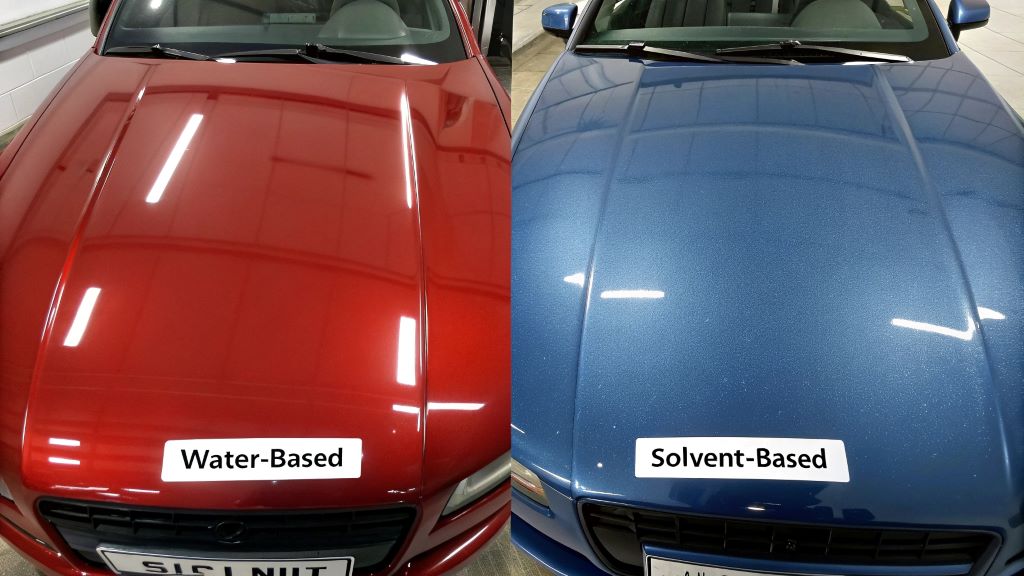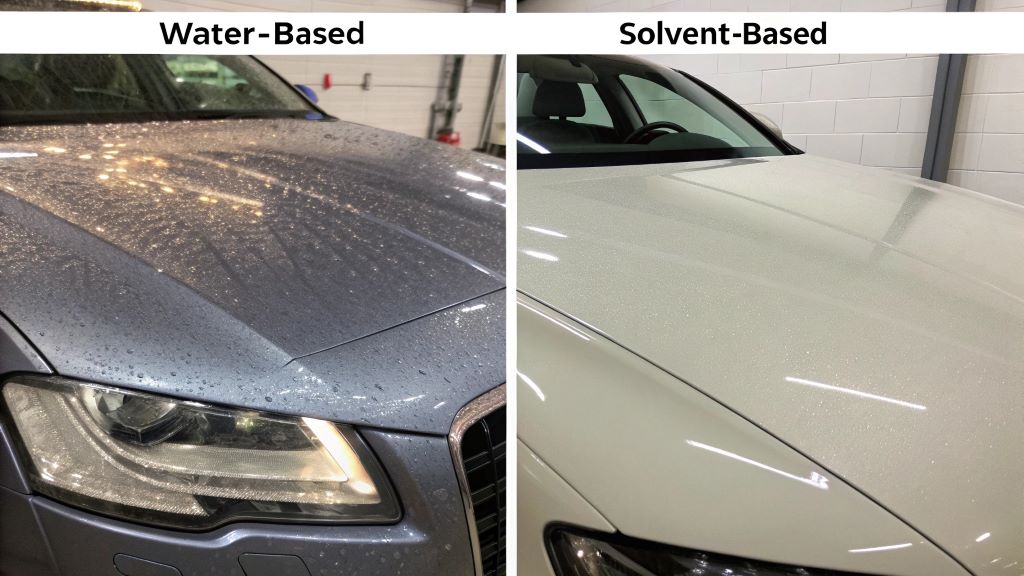Water-Based vs Solvent-Based Car Paint: Environmental Impact

When choosing car paint, understanding its environmental footprint is critical. Two primary contenders—water-based and solvent-based car paints—offer distinct advantages and challenges. In this article, we’ll unravel their ecological impact, guide your choices, and explore how water-based vs solvent-based car paint align with sustainable practices. To make informed decisions, let’s explore Carrepro for insights into vehicle care and maintenance.
Understanding the Core Differences Between Water-Based vs Solvent-Based Car Paint
Car paints consist of binders, pigments, and solvents that ensure smooth application and lasting color. The key difference lies in the solvents: water-based paints use water as a primary medium, while solvent-based paints rely on petroleum-based chemicals.
Water-based paints are lauded for their eco-friendliness as they emit fewer volatile organic compounds (VOCs). These VOCs contribute to air pollution, smog, and health issues. According to the U.S. Environmental Protection Agency (EPA), VOCs from solvent-based paints are a significant source of indoor air pollution. Conversely, solvent-based paints, though durable and easier to apply, release higher VOC levels.
Recent studies reveal that switching to water-based paints can reduce VOC emissions by 90%. Despite these benefits, challenges such as longer drying times and sensitivity to humidity hinder their universal adoption. On the other hand, solvent-based paints excel in durability but at the cost of environmental degradation.

Durability and Maintenance: A Critical Comparison
Durability is a pivotal factor in car paint selection. Solvent-based paints dominate in harsh conditions, providing resistance to UV rays, corrosion, and wear. However, this longevity comes with significant ecological costs, as their production and application often involve harmful chemicals.
Water-based paints have made strides in durability, incorporating advanced resins and additives that rival solvent-based options. Modern manufacturers offer products that meet both durability and sustainability standards.
When considering a paint job, improper installation, like a crankshaft pulley bolt too tight issues, can lead to wear and tear. This highlights the importance of professional application, regardless of paint type.
Health and Safety: Protecting Consumers and Workers
The health implications of car paint extend beyond the environment. Solvent-based paints emit high VOC levels that can cause respiratory issues, dizziness, and long-term conditions for workers and car owners. The World Health Organization links prolonged VOC exposure to increased cancer risks.
In contrast, water-based paints prioritize safety, significantly reducing toxic emissions. For auto body shop workers and enthusiasts, these paints ensure a safer application environment, aligning with modern health standards.
Efforts to reduce VOC emissions have led to stringent regulations in many regions. For example, the European Union’s Paints Directive mandates low-VOC products, pushing the industry toward water-based alternatives. Discover Why Does My Car Smell Like Gas?
The Role of Technology in Shaping Sustainable Paint Solutions
Innovations in paint technology are bridging the gap between performance and sustainability. Advances in nano-coatings, UV-cured finishes, and hybrid formulas promise enhanced durability with minimal environmental harm.
Water-based paints are at the forefront of these innovations, leveraging cutting-edge chemistry to overcome historical drawbacks. Solvent-based paints are also evolving, with manufacturers introducing low-VOC formulations to meet eco-conscious demands.
Consumers and businesses must weigh factors such as cost, environmental impact, and longevity. By integrating sustainable practices into manufacturing and application, the automotive industry can achieve a balance that satisfies both performance needs and environmental responsibilities.
FAQs
What are VOCs, and why are they harmful?
VOCs are volatile organic compounds that evaporate into the air, contributing to smog and health issues like respiratory problems and cancer.
Are water-based paints as durable as solvent-based options?
While solvent-based paints have traditionally been more durable, advancements in water-based formulations now offer comparable durability.
Do water-based paints cost more than solvent-based paints?
Initially, water-based paints may cost slightly more, but their long-term benefits, including reduced environmental impact and health risks, often outweigh the cost.
Why are solvent-based paints still widely used?
Solvent-based paints remain popular for their durability, ease of application, and performance in extreme conditions.
How can I ensure an eco-friendly car paint application?
Choose low-VOC or water-based paints and work with professionals who adhere to sustainable practices.
What regulations govern VOC emissions in car paints?
Regions like the EU and California have strict VOC limits, driving innovation in low-emission paints.
Conclusion
Choosing between water-based and solvent-based car paints requires a deep understanding of their environmental, health, and performance impacts. While solvent-based paints offer unmatched durability, their ecological toll makes water-based options increasingly appealing. By supporting advancements in sustainable paints and considering eco-friendly alternatives, consumers can make choices that protect both their vehicles and the planet.








